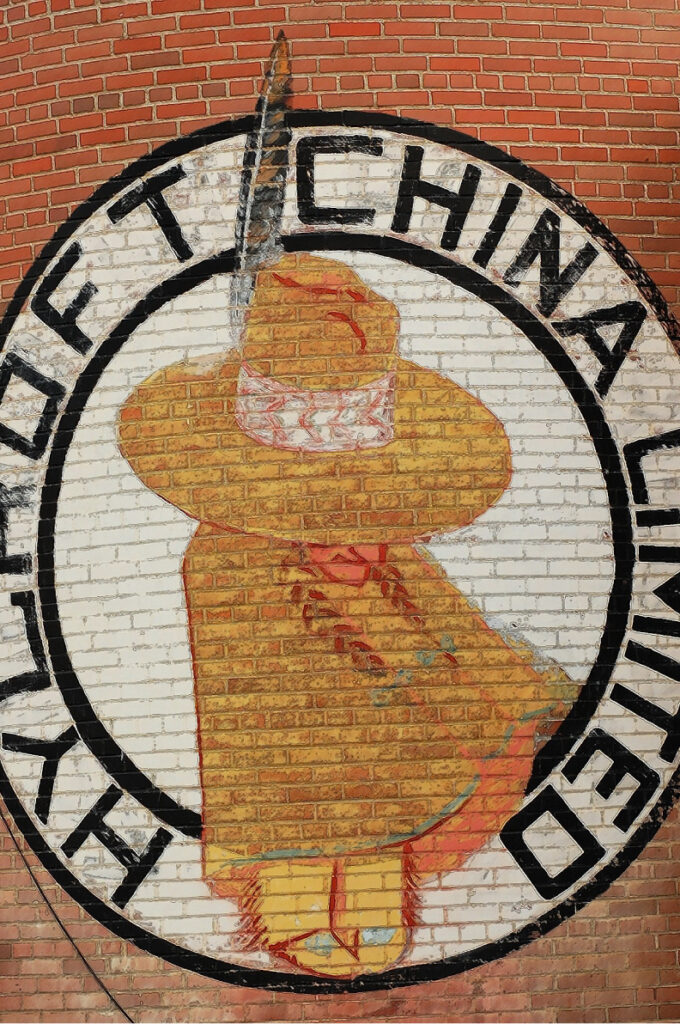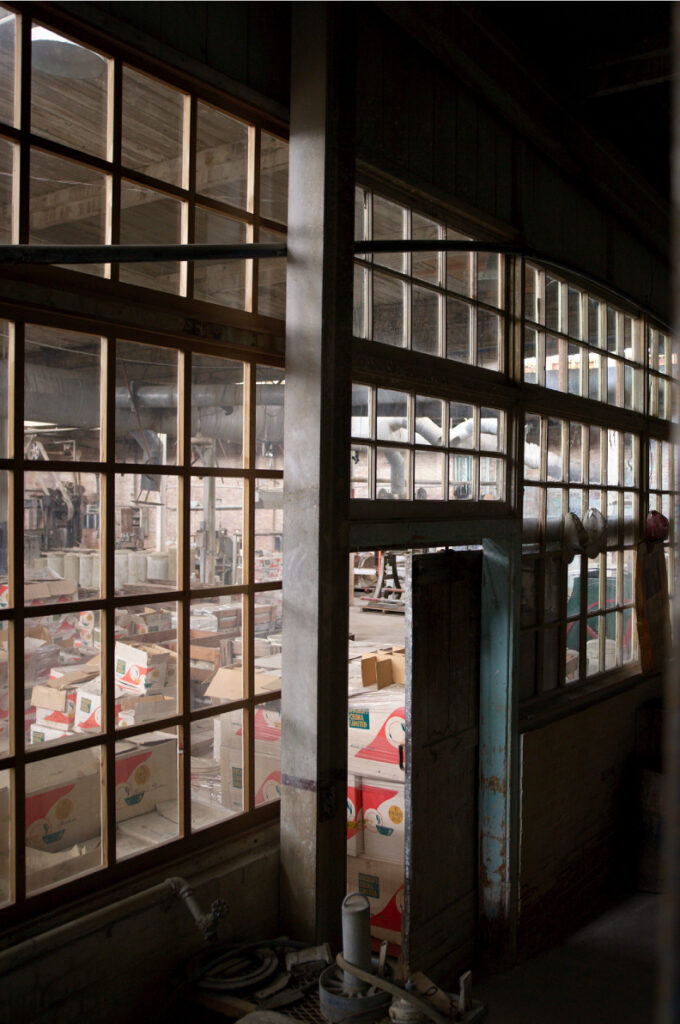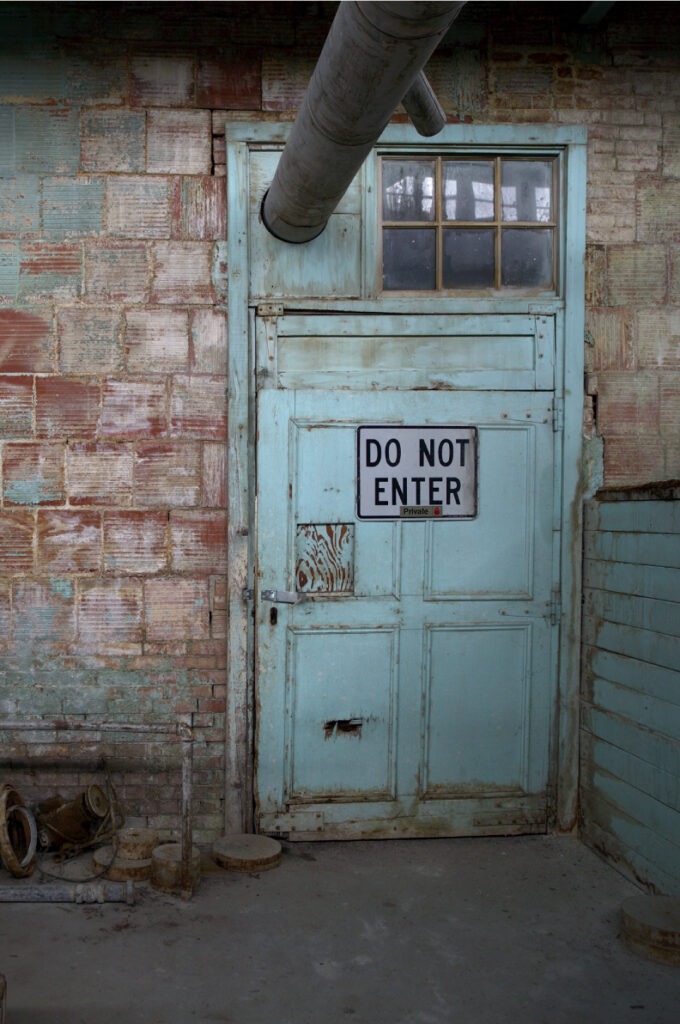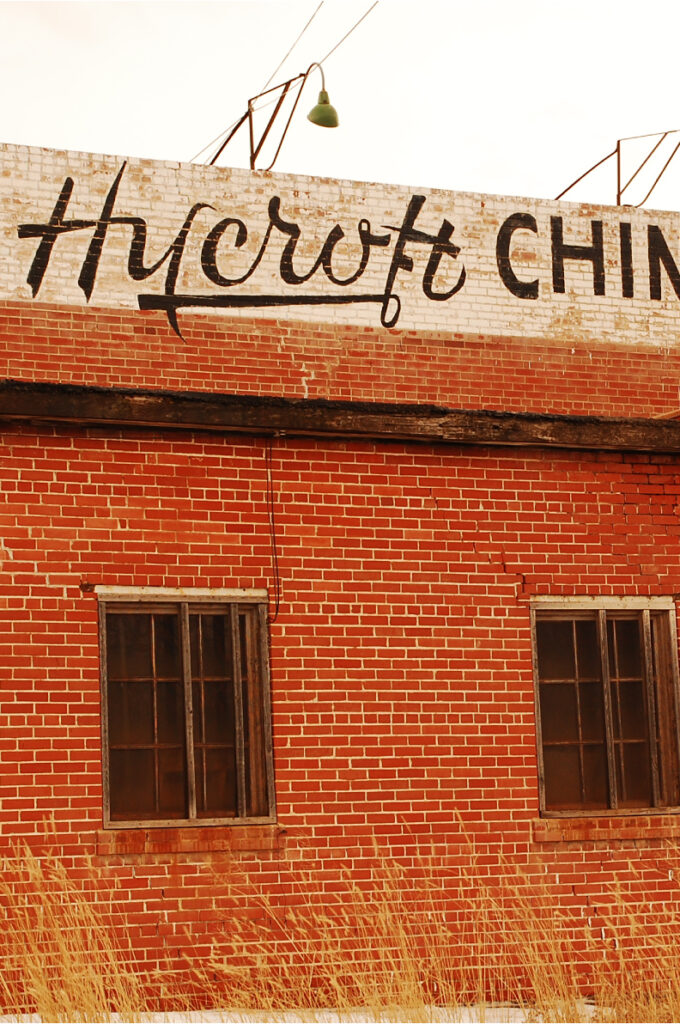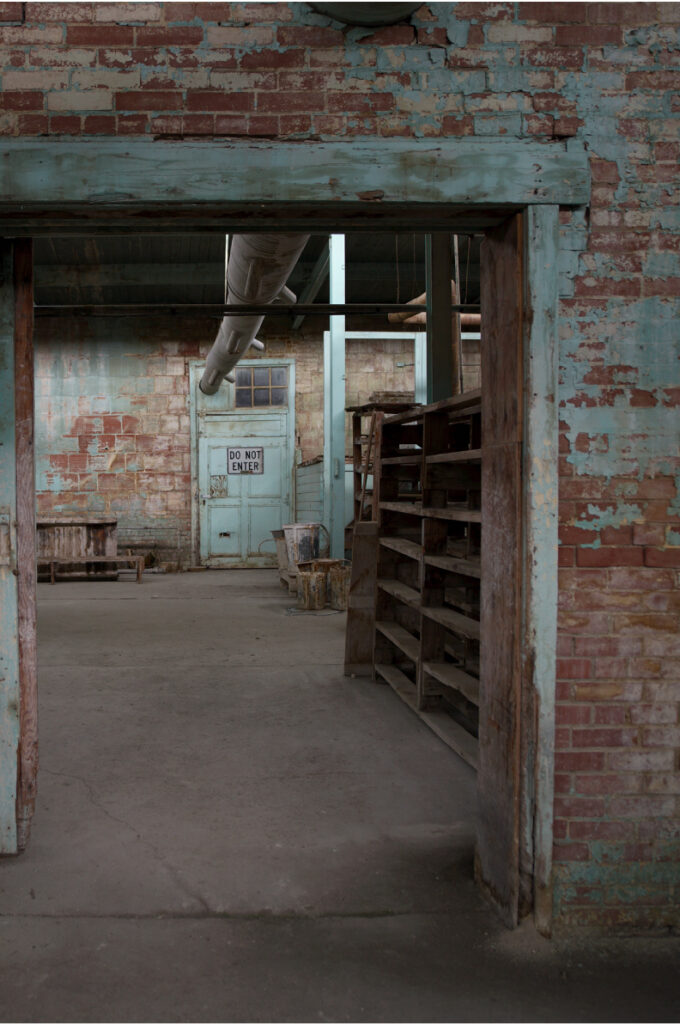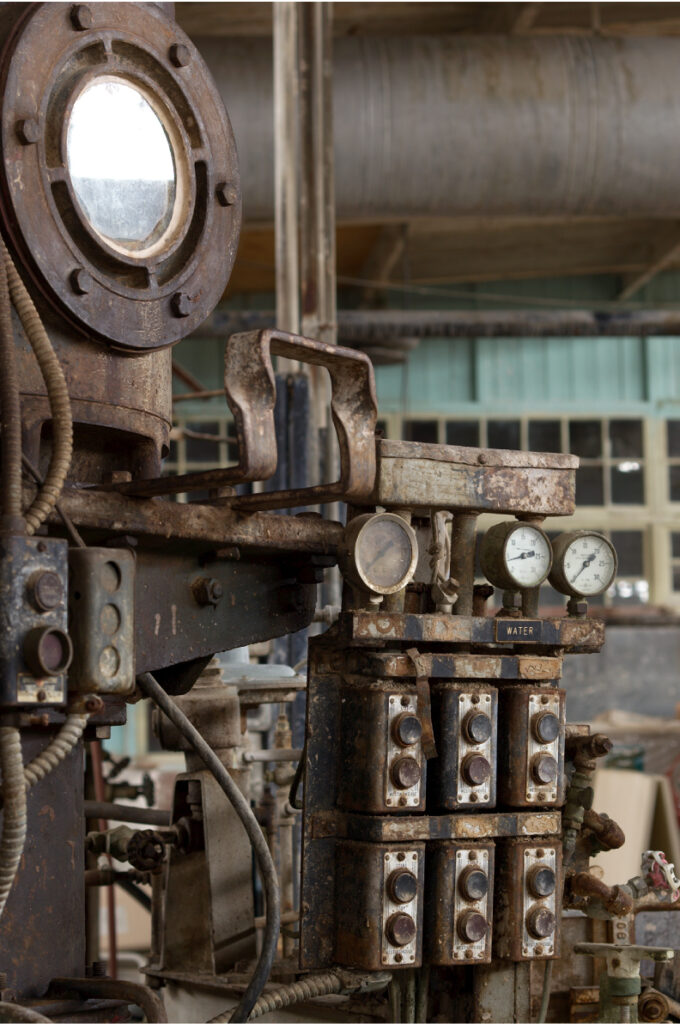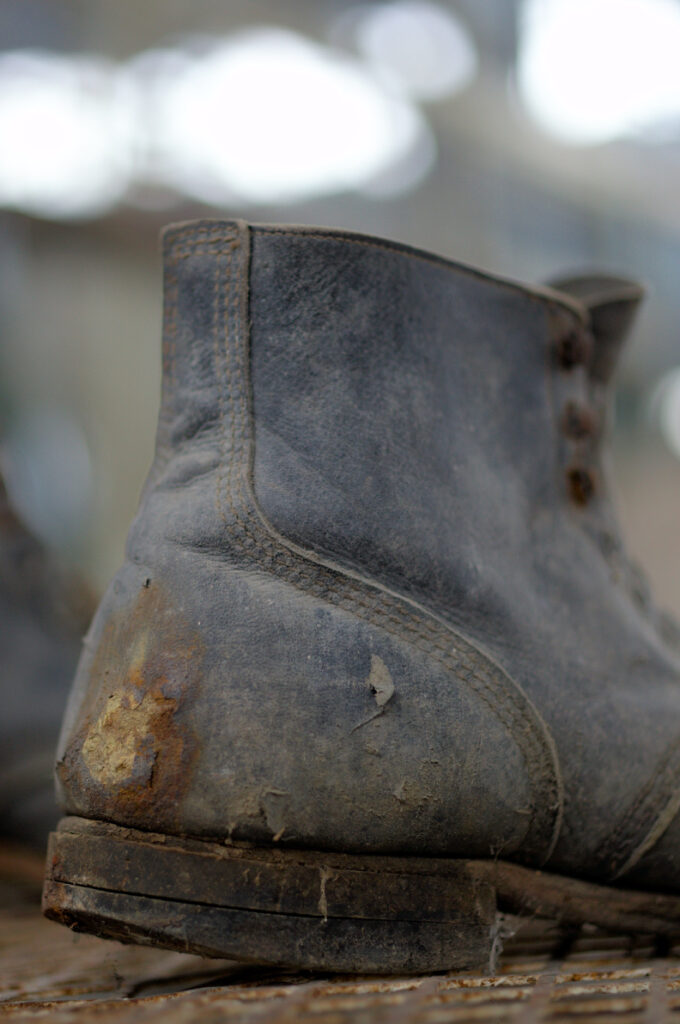Medicine Hat Potteries Ltd began production in 1938, offering more delicate and ornate products than Medalta.
The Hycroft China Ltd. Factory is a largely intact example of modern factory architecture of the time.
Hycroft China continued to operate until the plant was closed in the late 1980s.
Hycroft China Ltd. Factory
The Hycroft China Ltd. Factory site includes a 1938 factory building, a 1947 warehouse, a shed housing the natural gas works and a railway right-of-way. The site is situated on roughly 4.475 hectares of land in the eastern portion of the City of Medicine Hat.
The heritage value of the Hycroft China Ltd. Factory lies in its association with southern Alberta’s important clay-products industry and its fine and largely intact example of modern factory architecture of the time.
The clay-products industry in Medicine Hat began production in the mid-1880s, shortly after the Canadian Pacific Railway’s transcontinental line went through the region. Blessed with high-quality clay and natural gas to fuel the kilns, Medicine Hat became a focus for the creation of bricks, pottery, and other ceramics. In the late 1930s, J. Harlan “Hop” Yuill decided, in spite of the vagaries of the Depression and robust competition from Medalta Potteries, to forge ahead with a new clay-products company in Medicine Hat.
The Medicine Hat Pottery Company began production in 1938, offering more delicate and ornate products than Medalta.
The company continued to operate until 1955, when it was purchased by Marwell Construction of Vancouver and the name of the venture was changed to Hycroft China.
Only two years later, the operation was sold again, this time to the multimillionaire Mayor of Medicine Hat, Harry Veiner. A consummate salesman, Veiner deftly reorganized the company and diversified its product line, adding sanitary wares like toilets and sinks to the company’s traditional product line of pottery and souvenir items. Veiner’s innovations reinvigorated the company’s fortunes and Hycroft China continued to operate until the plant was closed in the late 1980s.
The Hycroft China Ltd. Factory site is an excellent example of an industrial clay-products complex and maintains many of the structures, machines, and artifacts associated with the manufacturing of pottery and other ceramics.
The factory, built between 1937 and 1938, is a remarkable construction, equipped with cutting-edge technology and reflecting in its architecture and design the marriage of utilitarian considerations with the period concern with creating attractive and safe workplaces. The building features a long bank of clerestory windows that suffuse the interior with natural light, as well as several aesthetically-pleasing Art Moderne architectural elements, including curved walls and glass block windows.
The factory included other elements intended to promote morale and worker satisfaction, including a soothing, muted blue interior colour scheme, a loudspeaker system to broadcast radio programs and records, a soft drink cooler and water fountain on the factory floor, and modern safety devices. In addition to these creature comforts, the factory also featured the latest in clay-products technology, including a massive circular tunnel kiln measuring over 20 metres in diameter – at the time the largest such kiln in the nation – and other sophisticated machines.
These luxuries and innovations served not only to improve efficiency and work safety, but also helped the company to lure employees away from Medalta Pottery, its chief competitor.
Many of the original machines and artefacts are still on site, offering a rich example of the structures and processes of clay-products manufacturing. The other elements of the site, including the utilitarian warehouse building, the railway right-of-way formerly used to move supplies and finished products, and the two structures housing the gas works are architecturally unremarkable; nonetheless, they illuminate the working structural relations between the various elements of the site.
Source: Alberta Culture and Community Spirit, Historic Resources Management Branch (File: Des. 1885)

